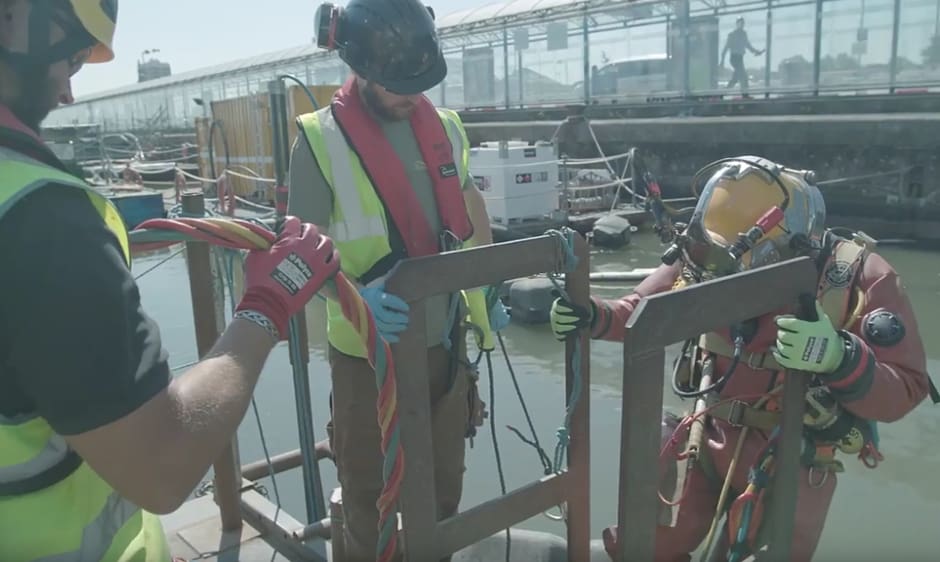In what is claimed to be the largest inshore diving project in the country, a team of divers and surveyors have been checking over 400 sites on the bed of the King George V dock which were flagged as showing ferrous anomalies during initial magnetometer surveys.
The vast majority of these sites have been benign, but in February 2018 a 500kg German bomb was found just to the south of the terminal’s east pier, leading to the closure of the airport and the implementation of a 214m cordon while the Royal Navy removed the ordnance for detonation off Shoeburyness.
The survey is essential to ensure the safe installation of 1,100 piles (steel and concrete columns) in the dock bed, which will support a concrete deck the size of 11 football pitches, as part of the £480m City Airport Development Programme. On this new deck, above the dock water, will stand new terminal facilities, eight aircraft stands and a parallel taxiway.

As it stands, 38 final sites require investigation, with a view to survey completion in early November. Commenting on the project Robert Sinclair, CEO of London City Airport, said: “This has been a mammoth survey - the largest inshore diving project in the country, on the doorstep of London’s most central airport - requiring world-class skill and patience. The survey’s success is intrinsic to the development construction phase, which is underway, meaning we can get on with building an even better airport for Londoners and visitors to our great city.”
According to Alex Werner, Curator of the Museum of London Docklands, tens of thousands of bombs were dropped on East London during the second World War, around 10 per cent of which failed to detonate. King George V dock, which was one of the biggest docks in London and is now the site the City Airport's expansion plans, would have been a prime target for German bombers.
As previously reported by The Engineer, unexploded ordnance (UXO) left over from WW1 and WW2 remains a significant issue for developers, particularly those working in the offshore energy industry.











Klein Vision unveils AirCar production prototype
According to the Klein Vision website, they claim the market for flying cars will be $1.5 trillion by 2040, so at the top end $1 million per unit that...